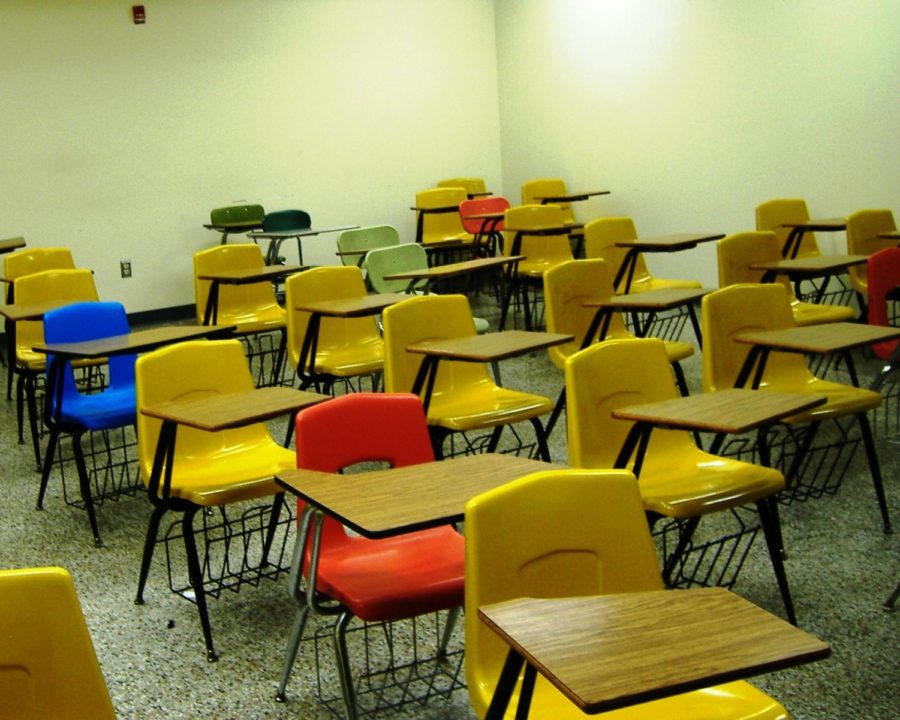Importance of trigger warnings in classrooms
Trigger warnings have become a part of the classroom norm in order to provide a safe space for students when discussing sensitive content.
August 13, 2020
As students are going back to school, there is different content covered in various courses that can be sensitive for certain students. In order to avoid the potential discomfort around these topics, trigger warnings are put in place to give preface about the sensitive content.
Rita Mookerjee, assistant teaching professor for women’s and gender studies, defined trigger warnings as statements that are placed on documents or content that could be potentially sensitive.
“This includes but is not limited to violence, discrimination, rape, assault, battery and anything that might provoke response that’s connected to trauma or any other kind of mental distress,” Mookerjee said. “It’s something to help to signal when that kind of content is going to appear.”
According to The Innocent Lives Foundation, vivid memories of trauma are more distressing if they happen without any warning, which can lead to a survivor unintentionally thinking about their trauma.
Unprompted triggering information can cause a host of other issues, ranging from mental health disorders, panic attacks, difficulty sleeping and more.
Mookerjee explained that in a classroom, everyone is trying their best to focus and contribute in class. However, it can be hard to do that when it becomes a dangerous and violent space. A trigger warning can be a guide for the students to identify what could possibly provoke their personal trauma.
Providing a student the opportunity to make that choice is crucial for their individual learning experience, Mookerjee said. That way the individual student can take the time to read, react and process the information in their own way.
Mookerjee also emphasized the importance of teachers and instructors doing some of the leg work to help students learn in the best way possible by providing trigger warnings.
“In women and gender studies, it’s kind of a no brainer for a lot of us, because our content consists of gender identity, orientation, all sorts of processes in regards to sexuality and gender,” Mookerjee explained. “Sometimes it gets really personal, and sometimes reading these articles and theories it can be problematic and troubling for the students.”
Mookerjee suggested the best course of action for instructors in regards to trigger warnings is for the teacher or instructor to go with their gut when deciding what should have trigger warnings in their course.
She also suggested instructors and teachers should listen to their students and how they feel about the content in the course. If a student approaches an instructor or teacher and says the content is challenging for them emotionally, then the instructor should probably think about putting a trigger warning on the topic.
“I’d rather be safe than sorry,” Mookerjee said. “If I think a sensitive topic could connect to certain trauma, then I would put a trigger warning out so that students have an opportunity to make a choice.”
Mookerjee also touched on the concept that trigger warnings are very important, because people aren’t having the same conversations as 20 years ago. She explained having trigger warnings in a course is a form of accountability for instructors to provide a safe space for students to continue learning without reliving their own personal trauma.
Mookerjee said by using trigger warnings, it provides a space for educators to validate and acknowledge their students’ own traumas without having to directly speak on those traumas.
“I think we just need to be cautious,” Mookerjee said. “If there’s anything that could potentially be triggering, it’s really easy to signal that to students. It’s important that we give validity to this trigger, it’s not some buzz word, it’s a word used by the DSM-5. By borrowing that language from experts it can help, we as educators, help student needs.”







